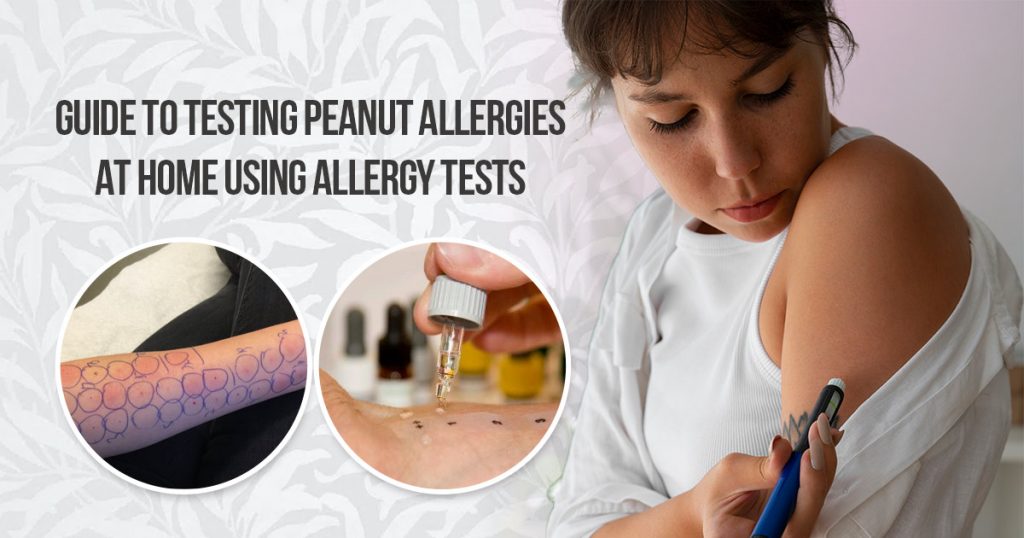Peanut allergies can be scary and life-altering. Did you know that about 6 million Americans deal with peanut allergies? It’s even more common in kids, and cases have tripled in the past 20 years! If you’ve been worried about allergic reactions or just want to know if peanuts are a no-go for you, testing from the comfort of your own home might be a great way to start.
Here’s a simple guide to help you figure out how at-home allergy tests work, what they can (and can’t) tell you, and how to interpret those results.
What Are At-Home Peanut Allergy Tests All About?
At-home peanut allergy tests are pretty straightforward. They check your blood for a specific antibody called immunoglobulin E (IgE). If you have a peanut allergy, your body treats peanuts like an enemy and produces extra IgE antibodies to fight them off. This can cause mild symptoms like itching or something much more severe, like trouble breathing.
With these handy kits, there’s no need to expose yourself to peanuts or sit nervously in a doctor’s office. Instead, these tests are designed to be stress-free. Here’s how it works:
- You prick your finger using a tiny needle (lancet) that comes in the kit.
- Collect a few drops of blood on a special card or in a vial.
- Ship your sample to the lab using a prepaid label.
- Wait a few days for your results, which they’ll send online or via email.
If you’ve been wondering, “How do I find out what I’m allergic to at home?” these tests are a great starting point—but keep in mind, they’re not the final diagnosis.
What Your Results Mean
When your results come in, you’ll see a breakdown of your IgE levels. Here’s a quick guide to what those numbers generally mean when it comes to peanut allergies:
- Low (below 0.35 kU/L): You’re likely in the clear, but if you’ve had symptoms, chat with a doctor.
- Moderate (0.35–3.49 kU/L): Peanut sensitivity or a mild allergy might be a possibility.
- High (3.50–49.99 kU/L): There’s a strong chance you’re allergic to peanuts.
- Very High (above 50.0 kU/L): A peanut allergy is very likely, and it could be severe.
It’s cool to have a tool to give you this info, but here’s the kicker: your IgE level alone doesn’t tell the full story. People with high numbers might not even have noticeable symptoms, while others with lower levels could have a big reaction. That’s why looping in a healthcare professional is a must.
Do At-Home Tests Really Work?
You might be thinking, “Are at-home tests even worth it?” The short answer is yes—with some conditions. If you’ve got all the classic peanut allergy symptoms (like hives, throat swelling, or trouble breathing), these tests can give you solid clues by measuring your immune response to peanuts. They’re especially helpful if you’re looking for a baseline before heading to the doctor.
That said, no single test can give you the whole picture. Sometimes the results can be a little off (false positives or negatives happen). And while these tests tell you how your immune system is reacting, they don’t gauge how severe your allergy might be. For that, you’d need additional testing, like a skin prick test or an oral food challenge, done with a doctor or allergist.
How to Prep for an At-Home Allergy Test
If you’ve decided to try an at-home test, here are a few handy tips to make it as smooth as possible:
1. Track Your Symptoms
Before testing, keep an eye on how your body reacts when you’re around peanuts. Do you get itchy? Any weird swelling or stomach upset? Jot down notes you can refer to later.
2. Warm Up Your Hands
Increasing blood flow makes it easier to get your sample. Run your hands under warm water or do some light exercise before using the lancet.
3. Follow the Steps
Every test kit has specific instructions, so take your time reading them. Make sure to clean your fingertip with the alcohol pad and collect your sample properly.
4. Don’t Overthink the Results
Your results are just one piece of the puzzle. Even if your numbers look high, it’s important to talk to a healthcare provider before making dietary changes or avoiding certain foods altogether.
Peanut Allergy Scale and Importance of Professional Intervention
Some tests use a peanut allergy severity scale. This often ranges from 1 to 6, with 1 being mild and 6 being severe. While this might seem like a simple guide, it’s not set in stone. A person at “Level 4” might have mild reactions, while someone at “Level 2” could react more severely depending on other factors. However, these tests have their limits. They provide a starting point, but they’re not meant to replace a medical diagnosis or treatment plan.
Visiting a doctor plays a key role in confirming at-home test results and understanding the bigger picture. A medical professional may suggest additional testing, such as skin prick tests or comprehensive blood tests, to pinpoint your triggers and assess your risk more accurately. They can also guide you in creating an effective action plan, such as how to avoid exposure to allergens or when to use medication like epinephrine in case of emergencies
If you’re unsure about your allergy, start with a kit and go from there. Knowing more about what your body can (and can’t) handle is the first step to living healthier and stress-free.
